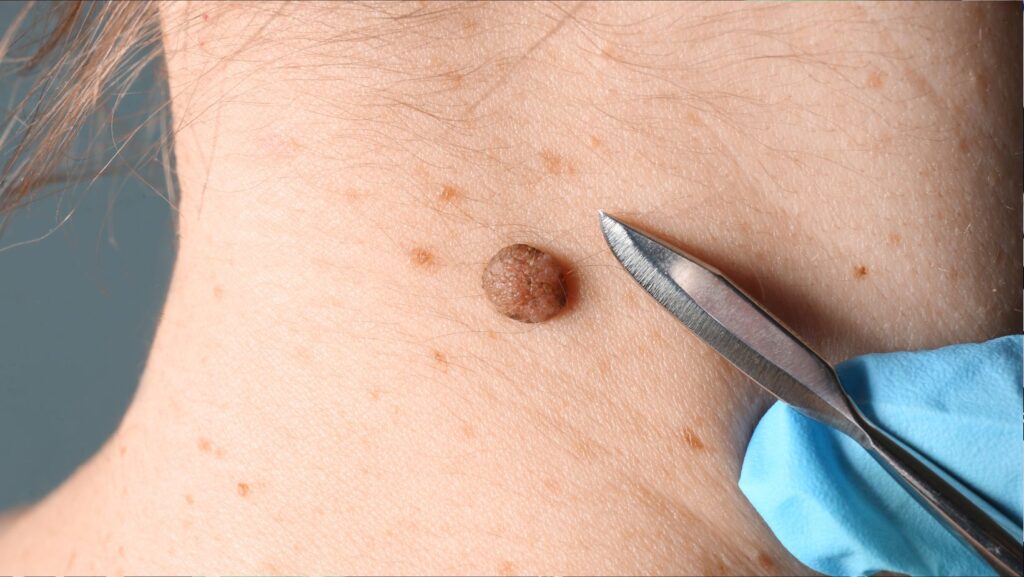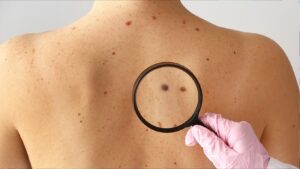
As parents, ensuring our children’s health and well-being is always a top priority. One aspect of their health that can sometimes cause concern is the presence of moles on their skin. While most moles are harmless, it’s important to understand what to look out for and when to seek medical advice. This guide will help you navigate the topic of moles in children, providing you with the knowledge to keep your child’s skin healthy and safe.
What Are Moles?
Moles, medically known as nevi, are common skin growths composed of melanocytes, the cells that produce pigment. They can appear anywhere on the body and vary in colour, shape, and size. Moles are usually brown or black but can also be flesh-coloured, red, or even blue.
Most children are born with a few moles or none at all, but moles often develop during childhood and adolescence. By adulthood, it’s normal to have between 10 and 40 moles.
Types of Moles
Common Moles
Common moles are small, round or oval, and usually less than 6 millimetres in diameter. They often have a distinct edge and are uniform in colour.
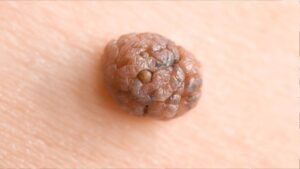
Congenital Moles
Congenital moles are present at birth. They can vary significantly in size and, while most are harmless, larger congenital moles may have a higher risk of developing into melanoma (a type of skin cancer) later in life.
Atypical Moles
Atypical moles, or dysplastic nevi, are usually larger than common moles and have an irregular shape or colour. They can sometimes resemble melanoma, which is why they require closer monitoring.
When to Seek Medical Advice
While most moles in children are benign, it’s crucial to know the warning signs that warrant a visit to a healthcare professional. The ABCDE rule is a helpful guideline:
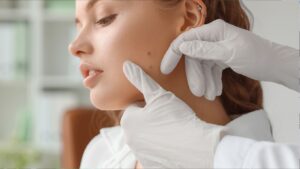
- A – Asymmetry: One half of the mole doesn’t match the other half.
- B – Border: The edges are irregular, scalloped, or poorly defined.
- C – Colour: The mole has varying colours such as shades of brown, black, tan, red, white, or blue.
- D – Diameter: The mole is larger than 6 millimetres (about the size of a pencil eraser).
- E – Evolving: The mole is changing in size, shape, or colour, or is new and looks different from your child’s other moles.
If you notice any of these signs, or if a mole becomes itchy, painful, or bleeds, it’s essential to consult with a dermatologist.
How to Monitor Moles
Regularly checking your child’s skin can help you detect any changes early. Here are some tips for effective monitoring:
- Establish a Routine: Perform skin checks once a month. Choose a day that’s easy to remember, like the first day of each month.
- Use Good Lighting: Ensure you have bright, natural light to see any changes clearly.
- Check Everywhere: Look at all parts of your child’s body, including areas not exposed to the sun like the scalp, soles of the feet, and between the toes.
- Document Changes: Keep a record of your child’s moles by taking photographs. This can help track any changes over time.
Prevention Tips
While you can’t prevent moles from forming, you can reduce the risk of them developing into something more serious by protecting your child’s skin from harmful UV rays. Here are some preventive measures:
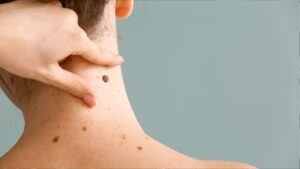
- Use Sunscreen: Apply a broad-spectrum sunscreen with an SPF of at least 30 on your child’s skin every day, even on cloudy days.
- Wear Protective Clothing: Dress your child in hats, sunglasses, and long-sleeved clothing when they are outdoors.
- Seek Shade: Encourage playing in shaded areas, especially during peak sun hours (10 a.m. to 4 p.m.).
- Avoid Tanning Beds: Ensure your child avoids tanning beds, which can significantly increase the risk of skin cancer.
Professional Skin Mole Checks
In addition to regular at-home checks, it’s beneficial to have professional skin mole checks. Dermatologists are trained to spot early signs of skin issues and can provide peace of mind. If you’re in the London area, seeking professional skin mole checks in London is a convenient and effective way to ensure your child’s moles are healthy and normal.
Understanding Melanoma Risk
Although melanoma is rare in children, it’s important to be aware of the risk factors. These include:

- Family History: A family history of melanoma increases the risk.
- Fair Skin: Children with fair skin, freckles, or red or blonde hair are at higher risk.
- Sun Exposure: Frequent sunburns or excessive sun exposure can increase the risk of melanoma.
Understanding these risks can help you take proactive steps to protect your child’s skin.
Conclusion
Moles are a common part of childhood and usually harmless. However, being vigilant and knowledgeable about your child’s skin can help you catch any potential issues early. By performing regular skin checks, using sun protection, and seeking professional advice when necessary, you can ensure your child’s skin remains healthy and safe. Remember, if you have any concerns, it’s always best to consult with a healthcare professional.
By staying informed and proactive, you can help safeguard your child’s health and give yourself peace of mind.

